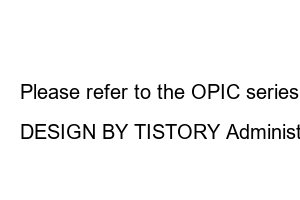오픽 등급표#OPIC self-study review
#Conquer OPIC through self-study
#OPIC Summary of study tips
Hello, today is the English speaking test that many people are preparing for these days.
Let’s learn about the OPIC grading system and the levels for each level. If you are aiming to obtain an OPIC grading, please refer to the posting and prepare.
OPIC’s evaluation is conducted according to ACTFL guidelines, which are ACTFL’s official evaluation criteria for speaking proficiency. In this way, OPIC conducts fair evaluations using its own evaluation standards.
One thing that many people are curious about is whether OPIC is a relative evaluation or an absolute evaluation.
To conclude, OPIC is based on absolute evaluation.
This means that even if the answer level of test takers who take the test together on the same day is on average higher than at other times, it will not affect your score. Depending on which day you select the exam date
Since your score is not guaranteed, you can get good results if you prepare according to your efforts.
OPIC measures foreign language skills using systematic and unified standards by ACTFL-certified raters.
First of all, depending on the scoring criteria,
It is classified into three levels: Advanced/Intermediate/Novice.
In the case of Intermediate and Novice
Each is reclassified into three detailed grades: High/Mid/Low.
There are a total of 7 grades, from the lowest grade, Novice Low, to the highest grade, Advanced Low.
■ OPIC rating table
Image source: http://www.opic.or.kr
■ Summary by level
① AL(Advanced Low)
Manage verb tenses consistently when describing events and use a variety of adjectives when describing people and objects.
Because conjunctions are used in appropriate positions, the cohesion between sentences is high and the structure of paragraphs is skillful.
It can be configured. This is the level of proficiency that allows you to explain and solve problems even in unfamiliar and complex situations.
② IH(Intermediate HIGH)
When encountering complex situations that are unfamiliar or unexpected to the individual, in most situations, explain the event and
Solve problems effectively. He speaks a lot and uses a variety of vocabulary.
③ IM(Intermediate MID)
You can speak naturally by listing sentences in situations that you are personally familiar with as well as everyday topics.
I try to use various sentence forms and vocabulary experimentally, and if the other person is a little considerate, I can have a conversation for a long time.
④ IL(Intermediate LOW)
You can talk about everyday topics in sentences.
Participate in conversations and speak with confidence on preferred topics.
⑤ NH (Novice High)
Can talk about most everyday subjects in sentences.
You can ask and respond to questions about personal information.
⑥ NM (Novice Mid)
You can speak using words or sentences that you have already memorized.
⑦ NL(Novice Low)
Although it is limited, I can speak by listing English words.
* In the case of Intermediate, the grades are subdivided into Mid1 < Mid2 < Mid3. Today, we learned about the OPIC grading system and the level of detail for each level. As I mentioned, OPIC is based on absolute evaluation, not relative evaluation. This is a test where you can obtain the grade you want based on your own effort and preparation, not luck. Please carefully refer to the standards for each grade mentioned today and prepare for the test in a way that suits your level. Please refer to the OPIC series postings on the blog for past questions, scripts, and study methods for each OPIC topic. DESIGN BY TISTORY Administrator

